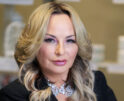
New Rules of the Game, Part II of II
Get Training and Practice
Composure isn’t a knack, it’s a skill—one that can be learned. When I first served on Churchill Downs Incorporated’s board, Tom Meeker was CEO. I would observe how he spoke in a very precise and orderly way, and later I asked him about it. Turns out he was trained to speak this way during his time as an officer in the Marines. He learned a means of communication called SMEAC, which stands for situation, mission, execution, administration, and command. In a very few words it communicates a commander’s mission and goals, and today it’s used at Harvard’s Business School as a business plan format.
Regal’s CEO Amy Miles told me she was precise and concise with language from her Wall Street training. She would go into a meeting with investors and have only thirty minutes to make her point. If you’re not succinct, you’re out, and you’ve missed an opportunity to convince a potential investor to buy in.
I trained myself through role-plays and rehearsals. After observing that those men and women who were most effective chose words carefully and with the most punch, I would always rehearse the one or two points I wanted to leave people with when I had the luxury of knowing a meeting’s purpose in advance. However, the reality of life is spontaneous interaction (better known as having a conversation) so I just worked to use fewer words to get my thoughts across.
I also learned succinct speaking habits through giving depositions, which is not something I would wish on anyone. Most business executives will encounter a lawsuit or two, and about the only thing they’re good for is training in how to keep quiet. Nervous blather is the downfall of many deposed. Answers that are cropped very short always work best.
Finally, you learn from experience, so take the opportunity to step up and speak. When I first began presenting to analysts, I would accompany bosses Ken Lowe, then CEO of HGTV, and Frank Gardner, then vice president of broadcast operations for E. W. Scripps. Both were master presenters, and I was about a C. The first time we were in New York and I got up to speak, I kept hearing feedback from the mike. Finally Frank, who was sitting nearby, whispered (more like shrieked): “Move away from the mike! You’re popping it!” I did as instructed and the feedback went away. Live and learn.
How you speak is a combination of presentation style, word choice, and cadence. Recall Valley girls. They use, like, lots of likes in their language One Seinfeld episode made “close talkers” famous, those folks who get right into your personal space to convey a point. There’s “upspeak,” which is what many Brits do, where the last word of a sentence is emphasized up, like a question being asked instead of a statement being made. Then there’s my personal favorite, “corporate drone.” Don’t think I need to explain that one. You’ve likely been in that audience far too many times.
There are many classes and programs you can attend to learn how to speak powerfully and effectively. You will be taped, which is the best way to learn because it’s the naked truth about how you sound.
Excerpted from NEW RULES OF THE GAME: 10 Strategies for Women in the Workplace by Susan Packard, with the permission of Perigee/Penguin, a division of Penguin Random House. Copyright © 2015.
Photo by Pressmaster | Shutterstock
Recommended
-
5 Skin Care Trends: What Profe...April 10th, 2024
-
The Power Of Saying “No” W...March 22nd, 2024
-
Is It Time To Change Your Rela...March 20th, 2024
-
Resilience & Transformati...February 20th, 2024
-
Letting Go Of Trying Harder To...January 23rd, 2024















